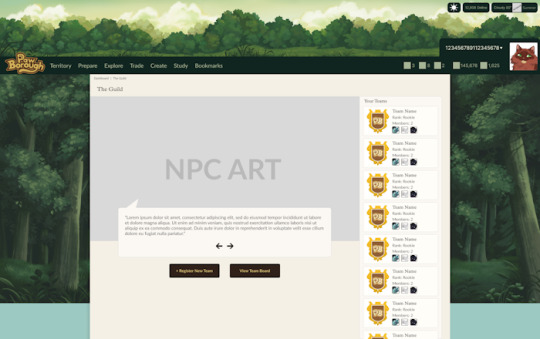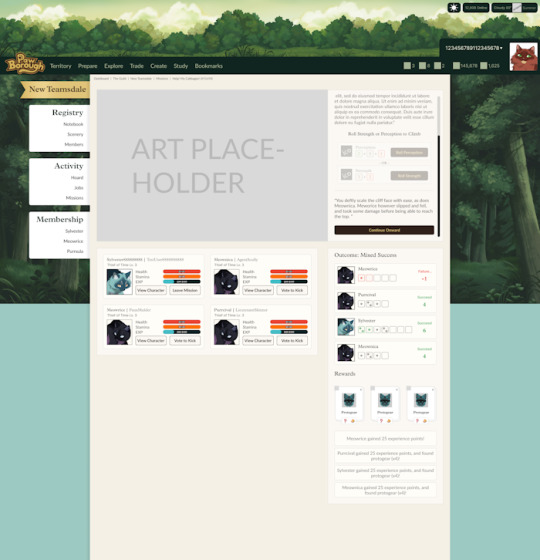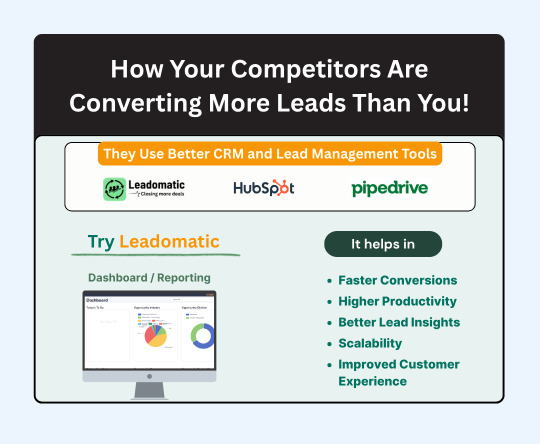#software testing checklist
Explore tagged Tumblr posts
Text
The fast-paced world of today poses multiple challenges for software testing. Tight schedules and changing architectures are two challenges that testers must effectively negotiate. Disruptive technology and agile approaches add to the process's complexity. Testers continue to be essential to producing high-quality software solutions in spite of these obstacles.
0 notes
Text

Our experts discuss the benefits of web accessibility for DEI initiatives, such as enhancing brand reputation, increasing customer loyalty, improving employee engagement, and avoiding legal risks!
#https://adasitecompliance.com/accessibility-diversity-equity-inclusion/#ada website compliance#ada compliance services#ada website accessibility#ada compliant websites#website accessibility compliance#ada compliance audits#ada compliance solutions#accessibility for disabled#ada web accessibility#website accessibility services#ada compliance guidelines#ada compliance checklist#ada accessibility guidelines#ada compliance consulting#website accessibility testing#ada compliance software#website ada compliance#ada compliance requirements#ada website audit#ada compliance training#website accessibility audits#ada compliance resources#ada compliance consulting services#website accessibility guidelines#ada compliance for small businesses#ada website accessibility testing#ada compliance assessment#ada compliance tools#ada compliance analysis
0 notes
Text
Checklist meme WIP (lol missing text and some effects i wanted but this was more so of a test run of sorts)
can someone please recommend good editing software that is preferably free so i can make more of these without wanting to lose my goddamn mind when it comes to editing options
(please i wanna live my animatic/animation meme dreams that ive had since i was a child)
this song is very moshang fluff coded, i feel i dont need to elaborate
93 notes
·
View notes
Text
become an academic weapon 📚🔫✨
hi all !!
with my GCSEs this year, and only a few weeks before back to school, I decided to really lock in yesterday 🫣
so I thought I'd take all the info I've come across while scrolling through studytok and put it into a little post for everyone looking to improve in their studies (& for my benefit as well 🙈)

motivation
this is probably the biggest factor when it comes to locking into your studies, motivation can quite literally make or break your academic achievements (😦)
so, its very important you motivate yourself, and moreover, stay motivated 😭
i've made it sound daunting but motivating yourself is lowkey easier than you think, here's a few ways to do it:
picturing yourself in 10 years, where all your studying and hard work has paid off - you can't be that person without doing the work that they did 😬
you can also do the opposite of the above - imagine how disappointed you'll be if you didn't work as hard as you could have and failed
"revenge studying" - the most toxic yet probably the most widely effective technique - working hard so you can beat than the people who are better than you
make studying aesthetic - create pinterest boards, look at quotes and tiktoks, make success your greatest desire
make it an addiction - if you're bored? study. had a bad day? nothing like setting yourself up for the best future. having a great day? go make it better by making yourself smarter.
get a motivational study app - i LOVE 'Study Bunny' I've been using it for two days now and it genuinely motivates me to be more productive to keep my bunny happy 🙃

resources
obviously, you need some help where you can get it despite all the controversies surrounding studying and the use of the internet, there are some amazing online resources you can use that will actively help you 📚
Quizlet/Anki - both of these flashcard platforms are incredibly useful - Quizlet is a fun platform and you can search for flashcards made by other people - Anki, in my opinion, is better than Quizlet for memorising, and you can import flashcards from Quizlet.
Mindnote - A mindmap making software online, a user-friendly interface + is quick and easy to make them - Great for visual learners
YouTube - the teachers on YouTube are incredibly helpful and can explain any topics you're confused about very quickly and very thoroughly
Spark Notes - great for English literature, with in-depth analysis of your texts and modern translations
Physics & Maths Tutor - free past papers and topic questions for core subjects and a few others, great for active recall
Study Bunny/Flora - helps keep track of your progress and keeps you motivated, I recommend Study Bunny because I can see how much work I've done of each subject and tick off things on my checklist
these are just a few out of many other resources so go do some of your own research, especially if there are websites that help with a specific subject

techniques
different study techniques work best for different people, no technique is a one-size-fits-all, some people are visual learners, others perform best by memorising & etc.
active recall - the only one-size-fits-all method - is a cognitive function that you carry out to remember things in tests, so practising this is a must -> the best way to do this is by completing topic questions and past papers using minimal amounts of notes. basically just testing yourself before the actual test
Spaced-out revision - one of the best ways to make sure things stick in your mind, revise a topic/subject and revisit it every few days, eg. 1, 3, 5, 9, 15, 30; and by the 30-day mark it should be stuck in your mind because your brain believes its something that you need to know in the long run and stores it in your long term memory
Flashcards - great to memorise content for the test, especially subjects that are tested with orals
Scribble method - scribbling on a piece of paper while revising the content in any form, reading, listening, etc. helps your brain store the information you're consuming more effectively
Feynman method - basically just explaining the topic you're revising to someone, this helps you develop your understanding and catches out any areas you're unsure about to revise later
making mindmaps - this is great for visual learners, especially if you use different colours for each section of the map so that you can associate each concept with each colour and recall them easily
again, those are just a few that come to mind. do your own research and find out what works best for you 😇

while studying
knowing how to study effectively is also a crucial aspect of success (obviously) 🤭
here are a few tips:
don't listen to music with lyrics, instead you can listen to lofi tracks, cafe/library asmr, brown noise, jazz music (my favourite)
set yourself a study slot, like 2 hours every day at a specific time & set a focus filter on your phone for the duration of your study time
make an aesthetic/cute study space so you can enjoy your time in that space and it doesn't feel like a chore
get a whiteboard to make learning more interactive & fun
light a specific candle whenever you're studying so your brain knows to associate the scent with working
have regular breaks eg. every half hour for 5-10 mins
reward yourself afterwards, so you associate studying with a good experience

consistency is key, the more you study the easier & more fun it becomes 🙃 the more you study the more you are likely to succeed and fulfil your dreams ✨
remember though, academics is not everyone's thing:
"you cannot judge a fish by its ability to climb a tree"
everyone is good at something, and it doesn't make anyone lesser or greater 🫶
if you try your best, that is all that matters 🫠
- li 🌘
#academic weapon#academic validation#academicexcellence#student#gcse student#student life#studying#study motivation#study blog#study aesthetic#studyspo#studyblr#science#english#maths#gcse studyblr#gcse2025#tumblr fyp#it girl
54 notes
·
View notes
Text

Hello everyone!
First off, apologies for the later update this month!
The truth is that the software developers were on a slow bend this month. A majority of time was spent on theoretical economy balancing and item number crunching. While this is important work for the long term, there’s not much to show for it aside from spreadsheet numbers. We’re now back in full swing!
Originally, we wanted to wait to update the demo with Longhairs before releasing a check in. You all deserve some substantial content.
However, the devs reported that they were not going to be able to do this until next week. Hearing this, we didn't want to continue the wait after that!
That all being said, Longhairs and Cheeks/Lollipop are coming this month, full promise! The art has all been ready, we just had some technical kinks to buff out!
Moontails are next up with the majority of their patterns done. The breed currently needs 3 more patterns illustrated. Moontail wing color-picking has also been a mighty task that is nearing completion! Check out a few wing color previews:

We expect Moontails to be up soon after Longhairs.
We have in the meantime begun concurrent production on illustrating Thumpers, with Fyrets and Bovines close behind.
This update, we will majority talk about what concrete expectations you as a follower can have for our timeline!
Let's look at some art first!
New Fauna
Nautitum

This aquatic fella saves snacks for later in his belly!
New Accessories
We have completed a backer accessory!
Firefly Chime

The illustration of the Firefly Chime was a great experiment for us, as we worked with a copy-past-able asset and still positioned it in unique ways.

With these two, we were able to test our pipeline for different types of accessories. The Firefly Chime was finished in record time, and we believe that we can illustrate quite a few simple accessories.
This is all very exciting for our catalog!
Guild UI


With this screenshot, we see how roll for outcome scenarios are played out!
We want to talk about our expectations for the future!
Our goal for a dedicated alpha is to have a test of about 100 concurrent users run for two weeks straight. This is to stress test the servers and weed out apparent bugs. We already have many playable states, but this test would mark a tangible transition to beta.
After which, we will move to beta to test things like number balancing, item drop rates, and general mechanic feedback. Beta is planned to run for several months while we iron the kinks.
So what should you expect?
Our original plan was for alpha to remain strictly internal and invite only. We wanted testers to understand that this would be a rather laborious volunteer job with less fun, more QA. However, we have been shown by the sheer dedication and passion in our supporters that some of you would want nothing more!
So, we're opening alpha applications!
Alpha Applications
Alpha will be a two week long test with an average of 100 users.
We must stress that this is a volunteer job with more expectations than beta. You will be given a checklist of functions to test and buttons to click daily, and be expected to report any bugs or lack thereof each time. All alpha testers will be compensated for their time and energy with an exclusive fauna. (As mentioned before, exclusive Fauna will not be counted for Faunapedia completion rewards.)
Compatible volunteers will be chosen at random from our application.
Sign up here!
Applications will close upon announcement. We will make an announcement of a closure date one week before they officially close!
Timeline
We are planning to have alpha up and running within 30-60 days from now.
Closed beta will begin 3 weeks after alpha.
From there, we plan to open our doors for people without beta keys during registration periods. This will be "open beta."
Projection for this is August of 2024.

This asset will be pinned to all our social media.
While we've had general estimations before now based on different factors, this is our first promise of an established expectation. We had a lot of learning curves, personal setbacks, and growing pains as a team, but we've ironed out much of the kinks seen in our early development. August has been a consistent goal of ours for opening registrations from the beginning, and we're now finally comfortable enough to announce it.
We are still hesitant to announce dates at this time, as frankly anything can happen and we're loath to have users wait months for a date only to be disappointed by a push to the next week, but this is what our team is expecting and projecting.
Dates will be announced when they are within 2 weeks time! This will give us a tight enough window to accurately predict when the game will be ready, and ensure there aren’t last minute pushes. It will also give users time to prepare for grabbing early registrations.
From open beta, we'll be working to transition into a formidable game. All our focus will be on readying content and making sure our mechanics are balanced. This ballpark is dependent on a number of factors, so we'll need to update as we transition into Phase 4!
One more note for users to expect: Throughout alpha and beta, there may be placeholder assets for smaller things such as food icons or items. These will be visually indicated as placeholders.
The intention for these game states will be to make sure our software runs as smoothly as possible, the economy is balanced, and the game is fun to play. Our program will not be "launched" until all assets are final, but it will speed our development to both test and produce at the same time!
Our artists during this phase of development are all freelancers, and their availability is largely dependent on outside factors. We must remain vigilant to this fact while we plan out our timeline, and we appreciate everyone's support and patience!
We realize this update has less content than previous updates, but a large amount of our manpower at this moment is going towards monotonous things such as repeat pattern illustrations, repeat accessory illustrations, and refinement of mechanics already featured.
Thank you to all our supporters who have stuck by us while we continued development and faced new challenges! It's a huge step for us to be at this stage, and we're all very excited!
To Summarize: We showed a new fauna, new backer accessory, guild UI development, and opened applications for 2-week dedicated alpha testing.
What to expect next month: Further asset and UI development, peaks into alpha gameplay and dedicated game loops.
43 notes
·
View notes
Text
Top Pro Audio Gear Every American DJ Needs This Summer
There’s something electric about summer—the festivals, rooftop parties, beachside gigs, and late-night warehouse sets. For DJs across the U.S., it’s not just the time to perform; it’s the time to shine. And let’s be honest, the right gear can make all the difference between a forgettable set and an unforgettable experience.
Whether you're spinning in a Miami club or throwing down in the desert, having the right pro audio gear is a must. But with so many options out there, it can get a little overwhelming. That’s why we’re breaking down what every DJ should consider adding to their setup this summer. Think of this as your seasonal checklist, designed to help you stay ahead, sound amazing, and look like a total pro.

Reliable Speakers That Can Handle the Heat
Summer DJing often means unpredictable environments—outdoors, hot venues, sudden rain. So, the first thing to lock down? Your speakers. Look for portable speakers with solid output and clarity across the lows, mids, and highs. More importantly, make sure they're built to withstand a little weather and movement. Portability and power should go hand in hand. You don’t want to compromise on sound just because your gig is under the sun or away from a wall outlet.
A Mixer That Offers More Than Just Volume Control
Let’s talk about mixers. They’re the command center of your performance. In summer gigs where crowd energy fluctuates fast, having a responsive mixer with smooth EQ controls, customizable filters, and dual mic inputs can save your set. Consider mixers that allow easy transitions, effects integration, and can sync effortlessly with your playback devices. You want something that feels intuitive under your fingers, especially in the heat of the moment.
DJ Controllers That Are Built for Versatility
If you’re performing at different types of venues—from backyards to big stages—you’ll need a DJ controller that adapts with you. Look for ones that are lightweight but not cheaply built, and ones that support both standalone use and software control. USB compatibility, onboard displays, touch-sensitive jog wheels, and customizable pads are a huge plus. In short, flexibility is key. A good controller helps you stay confident no matter the vibe of the venue.
High-Quality Headphones for Crisp Cueing
When you're cueing your next track, every detail matters. You need headphones that offer isolation, clarity, and comfort. Over-ear, closed-back headphones are ideal, especially in noisy summer environments. Durability is also critical—headphones get tossed into bags, wrapped in cords, and worn for hours on end. Prioritize models with swiveling earcups and adjustable bands so they fit your style of monitoring.

A Dependable Microphone for Crowd Engagement
Even if you’re not the talkative type, having a microphone on hand is always smart. Whether it’s for hyping up the crowd or making quick announcements, a clean, interference-free mic can add energy and professionalism to your set. Wireless models give you freedom to move, but make sure you test for signal reliability—especially outdoors, where interference can be tricky.
Lighting and Effects to Match Your Sound
This one’s a game-changer: lighting. Visuals are half the experience, and adding even a simple lighting setup can take your set from good to great. Consider compact LED lights, strobes, or fog machines that you can sync with your music. These can be especially impactful during sunset sets or late-night events, adding a professional edge to your vibe.
Sturdy Stands and Protective Cases
Summer gigs can be rough on your gear. That’s why investing in heavy-duty stands and padded cases is a no-brainer. Speaker stands should be height-adjustable and stable on uneven surfaces. DJ controller and mixer cases with foam interiors will keep your equipment safe from accidental drops or even just the occasional spilled drink. They may not be flashy, but they’re the unsung heroes of every setup.
Power Management Tools You Can Rely On
Nothing kills a party like a power outage. That’s why having proper surge protectors, power conditioners, and extension cords in your setup is essential. You might be playing on a beach, at a park, or in a venue with old wiring—plan ahead. Bring gear that distributes power safely and gives you peace of mind during those peak-hour drops.
Cables and Backups – Don’t Overlook the Basics
One of the most underrated parts of your gear is also the easiest to mess up: your cables. Always bring extras—power cables, RCA, XLR, USB, and whatever else your gear needs. Color-coding them can help you set up faster and troubleshoot on the fly. Summer humidity and outdoor dust can mess with connections, so having fresh spares is always smart.
Portable Recording Options for Your Set
Recording your set is a smart move. It’s not just about content creation it’s about improvement. A good portable recorder lets you capture your performance in high quality so you can review what worked, what didn’t, and build a portfolio of your sound. Many devices plug directly into your mixer or offer dual-channel recording for crowd and music capture.
Bonus Thought: Where You Buy Matters
While it's tempting to shop based on price alone, investing in gear from a professional audio shop offers peace of mind. You get access to knowledgeable staff, genuine warranties, proper testing, and the kind of customer support that’s worth every penny—especially when your next gig is just around the corner.
DJing in the summer is a unique experience. From packed festivals to impromptu block parties, every event is a chance to make your mark. And having the right gear—gear you trust—can make that happen. Take the time to build a setup that works for you, one piece at a time. Stay cool, stay prepared, and most importantly—keep the crowd dancing.
Because at the end of the day, it’s not just about playing music. It’s about creating moments. And the right pro audio setup is your ticket to doing just that.
#audio#audio gear#music#dj#professional audio#audio shop in brooklyn#brooklyn#dj gears#summer party#pro audio gears
2 notes
·
View notes
Text
How to install and use IrfanView in Linux - Tutorial
How to install and use IrfanView in Linux - Tutorial
Updated: May 30, 2022
My Windows to Linux migration saga continues. We're still a long way off from finishing it, but it has begun, and I've also outlined a basic list of different programs I will need to try and test in Linux, to make sure when the final switch cometh that I have the required functionality. You can find a fresh bouquet of detailed tutorials on how to get SketchUp, Kerkythea, KompoZer, as well as Notepad++ running in Linux, all of them using WINE and successfully too, in my Linux category.
Today, my focus will be on IrfanView, a small, elegant image viewer for Windows, which I've been using with delight for decades now. It's got everything one needs, and often more than the competitors, hence this bold foray of using it in Linux despite the fact there are tons of native programs available. But let's proceed slowly and not get too far ahead of ourselves. After me.
As I said, it's majestic. A tiny program that does everything. It's fast and extremely efficient. When I posted my software checklist article, a lot of Linux folks said, well, you should try XnView instead. And I did, honest, several times, including just recently, which we will talk about in a separate article, but the endeavor reminded me of why I'd chosen IrfanView all those years back. And those reasons remain.
Then, I did play with pretty much every Linux image viewer out there. None is as good as IrfanView. It comes down to small but important things. For instance, in IrfanView, S will save a file, O will trigger the open dialog. Esc quits the program. Very fast. Most other programs use Ctrl + or Shift + modifiers, and that simply means more actions. I did once try to make GwenView use the full range of Irfan's shortcuts, but then I hit a problem of an ambiguous shortcut, wut. I really don't like the fact that hitting Esc takes you to a thumbnail overview mode. But that's what most programs do.
WINE configuration
The first step is to have WINE installed on your system. I am going to use the exact same method outlined in the SketchUp Make 2017 tutorial. I have the WINE repositories added, and I installed the 6.X branch on my system (at the time of writing).
IrfanView installation
Download the desired 32/64-bit version of the program and then install it. The process should be fast and straightforward. You will be asked to make file type association. You can do this, or simply skip the step, because it doesn't make any difference. You need to associate IrfanView as the default image viewer, if this is your choice, through your distros' file type management utility, whatever it may be.
And the program now works! In Plasma, on top of that, you can also easily pin the icon to the task manager.
Plugins and existing configuration(s)
Much like with Notepad++, you can import your existing workspace from a Windows machine. You can copy plugins into the plugins folder, and the IrfanView INI files into the AppData/Roaming folder. If you don't have any plugins, but you'd like to use some, then you will need to download the IrfanView plugins bundle, extract it, and then selectively, manually copy the plugins into the WINE installation folder. For instance, for the 64-bit version of the program, this is the path:
~/.wine/drive_c/Program Files/IrfanView/Plugins
As a crude example, you may want to make IrfanView be able to open WebP files. In that case, you will need to copy the WebP.dll file into the folder above, and relaunch the program. Or you can copy the entire set of IrfanView plugins. Your choice, of course.
Conclusion
And thus, IrfanView is now part of our growing awesome collection of dependable tools that will make the Windows to Linux migration easier. I am quite sure the Linux purists will be angry by this article, as well as the other tutorials. But the real solution is to develop programs with equivalent if not superior functionality, and then, there will be no reason for any WINE hacks.
If you're an IrfanView user, and you're pondering a move to Linux, then you should be happy with this guide. It shows how to get the program running, and even import old settings and plugins. I've been using IrfanView in Linux for many years, and there have been no problems. That doesn't say anything about the future, of course, but then, if you look at what Windows was 10 years ago, and what it is now, it doesn't really matter. Well, that's the end of our mini-project for today. See you around. More tutorials on the way!
Cheers.
3 notes
·
View notes
Text
Kickstart Your Fitness On How To Start a fitness Apparel Line: A Comprehensive Guide to Success

Launching a start-up fashion apparel business in the female fitness apparel niche is indeed a very engaging experience as it combines love for fitness clothing, fashion trends and, sports and business. The ultimate checklist to follow will help you to start the process of creating a profitable line of fitness wear.
Understanding of fitness clothing line

There are three main areas: choosing the best fabric for high performance, fabric weight, focusing on the stability, and adding in such things as the presence of moisture and breathing capability. Similarly everyday the athletic clothing line, the fitness clothing industry also top priority in terms of brand creation, market analysis, and marketing approach focused to the right demographic with keen interest in fitness and having a healthy lifestyle.
1. RESEARCH PLANNING

Understand the Market: Other recommendations include the following: Analyzing trends, target demographic, and players within the industry.
Choose Your Niche: To succeed in this competitive market, it is advisable to choose a niche, whether it is athleisure, performance wear, or sustainable materials.
Business Plan: Complete and submit the following plan as part of your proposal: plan: vision, goals, cost, and promotional plan.
2. PRODUCT DEVELOPMENT

Design Your Apparel: Other aspects of designs that needs to be taken into considerations include The purpose of the designs is to be unique that will appeal to the target audience.
Material Selection: Select materials of the highest quality that can resist wear and tear that often comes with many forms of physical training.
Prototype and Testing: Prototyping is the next step where one has to design and develop the prototypes of the concept and it is crucial to ensure that the gadgets created are functional, comfortable to wear and fashionable.
3. BRANDING AND IDENTITY

Brand Name and Logo: Namely, create a strong brand name and easily recognizable logo that would comply with the overall image of your brand.
Brand Story: Although a brand story does not necessarily identify neatly and distinctly with the audience, it is a building block by which you can create an emotional appeal as a way of communicating with the audience.
Brand Guidelines: It is imperative that what your brand represents on the Internet should resemble your offline brand image.
4. MANUFACTURING

Find a Manufacturer: Still using the example, try to research on the best manufacturer of the product that you would like to order within your set standard and financial capacity.
Sourcing Materials: Make sure that supplies of the chosen type of materials are constant.
Production Process: Supervise the manufacturing, or other processes, in order to ensure quality is not compromised.
5. LEGALITIES AND LICENSING

Business Structure: Decide on the right form of business to take (for example, LLC, sole proprietorship and others).
Licenses and Permits: The other important requirement includes; Securing the necessary business licenses and permits.
Trademark and Copyrights: Remember to safeguard your brand legally through the trademarks for the name, logo or any designs.
6. SETTING UP AN ONLINE PRESENCE

E-commerce Platform: Employ a friendly and easy to use e-business software to conduct your business with your customers.
Website Design: The need to create a website that is both attractive and easy to use cannot be overemphasized.
SEO and Content Marketing: Featured snippets must be implemented, and consistent development of content laced with SEO practices to accrue and maintain a loyal customer base should be the major goals.
7. MARKETING STRATEGY AND PROMOTION

Social Media Marketing: In this case, it is crucial to utilize social media platforms as a way of putting your brand out for people to see.
Influencer Collaborations: People follow the recommendations of their favorite personalities, especially in the online space, so use fitness influencers to advertise a new meal plan.
Email Marketing: In reference to the goal of increasing consumers’ purchases and maintaining their loyalty, it is vital to actively use e-mail campaigns to keep the target audience informed and involved.
8. LAUNCH AND GROWTH

Soft Launch: First, launch the product, specifically in a geographical location that will allow the research team to receive feedback before rebranding.
Official Launch: When your product is ready, ensure that it has a glamorous unveiling coupled with the promotions and campaigns.
Customer Feedback: Customers’ opinions can be heard through surveys, interviews or simply having them fill out a short questionnaire.
How Can You Choose the Suitable Fitness Clothing Manufacturer?
Choosing the right for fitness apparel brands and sports and fitness clothing brand by manufacturer involves several critical steps:
Research and Referrals

Always start your search online, and if you’re already connected to people in the fashion industry, ask for recommendations.
Evaluate Experience

In the case of sweaty gym and workout clothes made, the best manufacturers are those with specialization in manufacturing fitness apparel business apparels.
Check Quality Standards

Provide feedback on the quality control mechanisms used by the prospective suppliers and make sample demands.
Communication and Responsiveness

Guarantee that they are articulate and on the same page in terms of time.
Production Capacity and Flexibility

Check if they can fulfil your orders now and their ability to scale up for the future.
Cost and MOQs

You ought to compare costs and minimum order quantities (MOQs) that you will be willing to pay.
Ethical Practices

This means clothing manufacturers ensure that they adhere to the universally accepted ethical manufacturing standards.
FAQs

What is the first step in starting a fitness apparel line?
Ever before buying a product or designing one, a marketer needs to acquire some information in the niche market he intends to operate in.
How do I choose a niche for my fitness apparel line?
Keep it niche such as a sector, a category fitness clothing, or a material such casual clothing such as leisure-wear, sportswear, gym wear or eco-friendly material respectively.
What should be included in a business plan?
Describe your dream from day one, what you want to accomplish, how much money you will spend, solid business plan, how you will sell your product, and your business strategy and plan ROI.
How do I find a reliable manufacturer?
Research manufacturers, request samples, and assess their quality control, capacity, and ethical practices.
What legal requirements should I consider?
Choose a business model or structure to operate legally, Most legal business loans and structures require licenses and permits, and register a business name to safeguard your own business license and brand legally.
How can I build my brand identity?
It is also essential gym clothing brand to have a catchy brand name and logo that is geared towards attracting the intended audience to workout a fitness clothing line, as well as supporting them through a narrative.
What are the key elements of an online presence?
Establish an e-commerce site, create the storefront that consumers will want to frequent, and optimize the corporate website for search engine rankings.
How do I effectively market my fitness apparel line?
Get to market your own your own fitness clothing line, brand and products using social media marketing, brand association with influencers, e-mail marketing, and content quality.
Best advice to start a fitness clothing business
Allocation and the execution of goals and objectives, budget, sales and marketing strategies or the overall business plan is crucial. Brand your campaigns and target your audience through the proper use of social media, well-chosen influencers and online marketing. Marketing has to be properly developed, the web site has to be built in a way that it is easy to navigate, and contain optimized links that will bring buyers to the site. Remain open to change to stay in tune with emerging trends in the industry and target market, and with the opinion of the target customer to design better products and perform better business functions. Some of the tips involve; networking with professional industry players and looking for a mentor in the matter.
Conclusion
To sum up, it is crucial to outline the precise step-by-step plan when launching a fitness apparel line, from the accounting of the saturation in market and choice of the niche to creating the recognizable brand image. Hence, to create a niche fitness brand identity and carve out a space for itself within the cut-throat competition for quality fitness apparel and apparels, one must focus on quality fabrics, unique designs, and targeting the right consumer. And do not forget about using digital tools, addressing the audience through social networks, and being ready to adjust tactics according to tendencies and consumers’ responses. Fitness business or a new fitness clothing line or brand may sound a little blur, but if you are fully committed and employ adequate strategies, you can make a lot of money out of it such as workout clothes, gym apparel line and other new fitness clothing line and activewear manufacturers.
This would mean that undertaking this journey is more of a learning process and an experimentation process. It is crucial to remain connected with other professionals in the industry to be able to find support in the shape of a mentor, as well as always monitor the market situation to be able to manage on threats or even turn them into opportunities to sell workout clothes. To sustain the appreciation of the value these apparels have in the fitness industry or your own fitness clothing line or business and ensuring customer loyalty, one must strive to embrace a winning strategy that complies with the customer-oriented approach into your own fitness brand or fitness clothing line business.
#blog#clothing#fitnessapparel#business#fashion#clothing business idea#how to start a fitness apparel line
2 notes
·
View notes
Text
tools_and_technologies
In creating the final solution, I'll first test different programs and software to understand their capabilities and scope out what features and functions I would need.
Below I have created a checklist of the different softwares I plan to use/test out, as well as their advantages and disadvantages.
Blender3D: A 3d modelling software. I'd like to learn how to use this software more as it's free and there are plenty of resources online that I can use and has numerous features that I can utilise for the solution. The disadvantage to this software is that although its a good starter in learning to 3D model, I've already found the UI of the program to be quite hard to navigate through and there are possible better alternatives.
Procreate - A drawing app. This software I am already very familiar with and have a good understanding on its capabilities and features, however, they are very limited. This app will definitely be useful in creating iterations and prototypes, but the final solution may need to be produced through a different software due to its limited capabilities e.g. vectors and 3D elements.
Adobe Illustrator - A graphic design software. I'm not too familiar with this program yet, but I am very interested in learning how to use it due to its vector-based software that I believe will be very useful in learning for the project, and outside. My only limitation is that there are limited resources available in learning how to use it and the limited time I have.
Garageband/Logic Pro - Both are DAWs (digital audio workstations) that I have little to no experience with. However, I feel that it will be useful, and even essential, in producing my sound element for a VR environment. I'll have to learn how to use either software which might require some time and a great amount of attention. Although I do have available resources (my boyfriend) that will be able to teach me how to use Logic Pro, I believe that I'd possibly have the capacity to fully utilise this program into my solution.
Oculus Quest VR Headset - A VR Headset. In all honesty, I don't have much knowledge on this product, let alone any other VR headset. This headset is also the only option available for me when testing out my solution. Although, from what I've gathered from online resources, this headset is easy to use, portable and at a cheaper price range in comparison to other VR headsets. The downside being its limited performance and a limited screen sharing.
Reference Pilgaard, M. L. (n.d.). Should you use Oculus Quest in your business? 3 pros and cons you need to know. www.linkedin.com. https://www.linkedin.com/pulse/should-you-use-oculus-quest-your-business-3-pros-cons-pilgaard/#:~:text=As%20with%20any%20technology%2C%20Oculus,methods%20of%20circumventing%20these%20issues.
6.08.23 9.14pm
2 notes
·
View notes
Text
How Your Competitors Are Converting More Leads Than You!
You're getting website traffic, inquiries, maybe even a few demo requests — but conversions? They’re just not where they should be.
Meanwhile, your competitors seem to be closing deals left and right.
So, what's going on?
The hard truth is: they’re doing things you’re not.They’re following up faster, understanding their leads better, and applying smarter strategies that drive conversions while you're still figuring out what went wrong.
This article will uncover exactly how your competitors are converting more leads than you, and how you can close the gap — or even get ahead.

1. They Know Their Audience Better Than You Do
Your competitors likely spend serious time understanding their ideal customers — what problems they face, how they make decisions, and what messaging triggers action.
What they're doing:
Building detailed buyer personas
Running surveys and interviews to gather insights
Using data from CRM, Google Analytics, and heatmaps to monitor behavior
A/B testing headlines, CTAs, and email campaigns
You can’t convert leads you don’t understand. Start by learning who your leads are, what they need, and what motivates them to act.
2. They Have a Clear and Optimized Sales Funnel
Successful competitors don’t leave things to chance. They’ve built intentional sales funnels that guide leads from awareness to conversion, step by step.
Their strategy:
Lead magnets that attract and educate
Landing pages designed for one goal: conversion
Automated nurturing emails that add value and build trust
Timely follow-ups by sales teams or chatbots
Your leads will simply move on, frequently to your rival, if your funnel is confusing or broken.
3. They Follow Up Faster — and More Often
Timing is everything in sales.
The first company to reply to a lead has a 78% higher chance of closing the contract, according to study. If you're slow to follow up, or only following up once, you’re giving your competitors an open invitation.
What they're doing:
Responding within minutes, not hours or days
Using automated Lead Management Tools for instant alerts
Sending personalized follow-ups, not generic templates
Following up multiple times (5–7 touchpoints)
You don’t need to be pushy — just present and persistent.
4. They Use Better CRM and Lead Management Tools
Your competitors are likely investing in tools that help them track, analyze, and act on lead behavior more efficiently.
Common tools:
Lead Management Software like Leadomatic, HubSpot, Zoho, or Salesforce
Email automation platforms (Mailchimp, ConvertKit)
CRM-integrated analytics to measure follow-up success
Chatbots or live chat for real-time lead engagement
These tools allow them to move quickly, personalize communication, and close more deals — all while you might still be chasing leads in Excel sheets.
5. They Offer Real Value Before Asking for the Sale
The best converters understand the psychology of trust. Your competitors may be offering free tools, useful content, webinars, or exclusive offers before asking their leads to commit.
This approach builds rapport and makes the lead feel understood, not sold to.
Examples of what they might offer:
Free consultations or audits
Downloadable resources (ebooks, checklists, guides)
Product demos or limited free trials
Educational blog content or videos
Give value first. The return comes when trust turns into a "yes."
6. They Personalize Every Touchpoint
Generic outreach is dead. Your competitors are winning because they personalize every email, every call, and every follow-up.
They use lead data (like job role, industry, past behavior) to tailor the message so the lead feels it's written just for them.
What to personalize:
Subject lines and first names in emails
Product or service recommendations
Case studies or proof relevant to the lead's industry
Call-to-actions that align with lead pain points
Personalization builds connection — and connection leads to conversion.
7. They Analyze, Improve, Repeat
Here’s where most businesses fall short: they don’t track what works and what doesn’t.
Your competitors are testing different follow-up emails, call scripts, offers, and even timing — then optimizing based on real results.
What they measure:
Open and click rates
Lead response times
Conversion rates by source
Cost per qualified lead
Drop-off points in the funnel
With this data, they make smarter decisions and constantly improve.
How You Can Start Converting Like Your Competitors
You don’t have to reinvent the wheel — just learn from the ones already rolling ahead of you.
Here’s a simple action plan:
Audit your current funnel and follow-up process
Define your ideal customer and map their journey
Use automation to speed up and personalize outreach
Track performance weekly and refine as needed
Don’t just follow up — follow through
Final Thoughts
If your competitors are converting more leads than you, it’s not luck — it’s strategy.
They’re acting fast, staying consistent, and putting the right tools and insights to work. The good news? So can you.
Start today by making small improvements: respond quicker, get to know your leads better, and offer more value in every interaction. Over time, you’ll see the results — more engagement, more conversions, and fewer leads slipping through the cracks.
Because when you understand your leads better, you stop losing them to your competition.
#LeadManagementTools,#LeadManagementSoftware,
0 notes
Text
Hospital Commissioning Mistakes to Avoid – Lessons from SHPL Projects
Commissioning a hospital is one of the most critical phases in the lifecycle of a healthcare project. It’s the final step before a hospital opens its doors—but also the stage where many costly and avoidable mistakes are made. From untrained staff to missing licenses, a poorly executed commissioning can delay operations, damage reputation, and inflate costs.
SHPL Management Consultancy, with its deep experience in hospital planning and commissioning, has identified common pitfalls and developed a proven roadmap to help promoters launch smoothly and successfully.
What Is Hospital Commissioning?
Hospital commissioning involves:
Setting up equipment and infrastructure
Completing documentation and regulatory approvals
Recruiting and training staff
Conducting mock drills and testing systems
Ensuring readiness for clinical operations
It bridges the gap between project completion and patient care.
Common Commissioning Mistakes Hospitals Must Avoid
1. Incomplete Regulatory Compliance Mistake: Delayed license applications or missing documents during inspection. SHPL Solution: We prepare a checklist of all necessary approvals (fire, pollution, biomedical waste, PNDT, pharmacy, etc.) and manage timely application and follow-ups.
2. Untrained or Underprepared Staff Mistake: Staff hired at the last minute, with no induction or SOP training. SHPL Solution: We plan recruitment in advance, conduct induction training, and implement SOP-based operational drills before launch.
3. Equipment Not Calibrated or Commissioned Mistake: Critical machines installed but not tested, leading to operational delays. SHPL Solution: SHPL coordinates with vendors for proper installation, calibration, and documentation of all biomedical and diagnostic equipment.
4. Poorly Defined Workflows Mistake: Staff confusion on patient flow, responsibilities, or communication hierarchy. SHPL Solution: We develop clear SOPs, departmental flowcharts, and escalation protocols tailored to the hospital's structure.
5. IT and Digital Systems Not Ready Mistake: Hospital Management Software (HMS) installed late or not aligned with workflows. SHPL Solution: We finalize the software early, test modules in real-time, and train staff on billing, pharmacy, diagnostics, and EMR usage.
6. No Soft Launch or Mock Drills Mistake: Hospital opens without trial runs, leading to chaos on day one. SHPL Solution: We conduct full-scale dry runs, mock audits, and emergency simulations to test readiness and correct issues.
7. Ineffective Marketing and Outreach Before Launch Mistake: No awareness in the community, low footfall in initial weeks. SHPL Solution: SHPL prepares pre-launch branding and marketing plans targeting referral doctors, communities, and digital platforms.
SHPL’s End-to-End Commissioning Support Includes:
Licensing & regulatory guidance
Departmental readiness checklists
HR hiring, training & SOP implementation
Equipment coordination & installation
IT systems setup and trial runs
Launch planning, PR, and outreach support
Conclusion
Hospital commissioning is not just a technical handover—it’s a strategic milestone that defines how patients will perceive your hospital from day one. With SHPL Management Consultancy, hospital promoters avoid common mistakes, reduce delays, and enter the healthcare market with full operational readiness and confidence.
#HospitalCommissioning#SHPLManagementConsultancy#HospitalLaunchStrategy#HealthcareProjectConsulting#HospitalPlanning#MedicalFacilitySetup#HealthcareOperations#HospitalReadiness#HealthcareCompliance#HealthcareInfrastructure
0 notes
Text
How Quality Control Impacts Customer Satisfaction and Brand Reputation

In today's hyper-competitive marketplace, businesses vie for attention, market share, and ultimately, customer loyalty. While dazzling marketing campaigns and competitive pricing often grab headlines, there’s a less glamorous, yet profoundly critical, function working tirelessly behind the scenes: Quality Control.
At RAQC Services, we understanding the intrinsic link between robust quality control, customer satisfaction, and an unblemished brand reputation isn't just good practice – it's a non-negotiable imperative.
It's easy to dismiss quality control as merely a checklist, a final inspection before a product ships or a service is delivered. However, this perspective fundamentally undervalues its strategic importance.
Quality control is not just about catching errors; it's about embedding excellence into every fiber of an operation, from the initial design concept to post-sale support. This proactive pursuit of perfection directly translates into tangible benefits that resonate deeply with customers and shape public perception.
How Quality Control Drives Customer Satisfaction
Customer satisfaction is the lifeblood of any business. Satisfied customers become repeat customers, brand advocates, and the most effective marketing tool a company can possess. So, how does quality control directly contribute to this crucial metric?
1. Meeting and Exceeding Expectations
At its core, quality control ensures that products and services consistently meet the promised specifications and performance standards. When a customer purchases a product, they have an inherent expectation of its functionality, durability, and safety. Effective quality control rigorously verifies these attributes, ensuring that what the customer receives aligns perfectly with, or even surpasses, their initial expectations. Imagine buying a smartphone only to find its battery drains within hours – a clear quality control failure that immediately sours the customer experience. Conversely, a device that performs flawlessly and reliably builds confidence and delight.
2. Reducing Defects and Returns
Defects are the archenemies of customer satisfaction. A faulty product leads to frustration, inconvenience, and the time-consuming process of returns or repairs. Each defect chipped away at the customer’s trust. Comprehensive quality control programs, employing statistical process control, root cause analysis, and rigorous testing, aim to identify and eliminate potential defects before they reach the customer. This proactive approach minimizes returns, reduces customer complaints, and significantly enhances the overall purchase experience. For service-based businesses, this translates to consistent service delivery, fewer errors, and smoother interactions.
3. Enhancing Reliability and Durability
Customers value products and services that last and perform consistently over time. Quality control plays a vital role in ensuring this longevity and reliability. Through material testing, stress tests, and lifecycle assessments, quality control teams verify that products are built to withstand the rigors of use. A durable product not only saves the customer money on replacements and repairs but also builds a sense of confidence and satisfaction in their investment. Think of a car that consistently starts on cold mornings, or a software program that never crashes – these are testaments to robust quality control.
4. Improving Safety
In many industries, quality control is paramount for ensuring customer safety. From pharmaceuticals and food products to automotive components and construction materials, defects can have catastrophic consequences. Strict adherence to quality standards, often mandated by regulatory bodies, protects consumers from harm. For RAQC Services, this translates to ensuring that regulatory requirements are meticulously met, protecting both the client's reputation and, indirectly, their end-users. A reputation for safety is a powerful driver of customer trust and loyalty.
5. Building Customer Loyalty through Consistency
Consistency is key to fostering long-term customer relationships. When a customer knows they can consistently expect the same high level of quality from a brand, they are more likely to become loyal advocates. Quality control ensures this consistency across batches, services, and over time. This predictability builds comfort and reduces the perceived risk for the customer, making them more likely to choose your brand again and again.
How Quality Control Fortifies Brand Reputation
Beyond immediate customer satisfaction, quality control acts as an unseen shield, protecting and enhancing a company’s most valuable asset: its brand reputation. A strong brand reputation is built on trust, reliability, and a consistent delivery of value.
1. Reputation for Excellence
A company that consistently delivers high-quality products or services naturally develops a reputation for excellence. This reputation becomes a powerful differentiator in the market, attracting new customers and fostering a sense of pride among employees. Think of brands renowned for their unwavering commitment to quality – they command respect and loyalty that competitors often struggle to emulate. This is a direct outcome of meticulous quality control processes.
2. Mitigating Negative Publicity and Crises
In the age of instant communication, a single quality lapse can rapidly escalate into a public relations nightmare. Social media amplifies negative experiences, and product recalls can inflict severe damage on a brand’s image and financial health. Robust quality control acts as a proactive defense mechanism, minimizing the likelihood of such incidents. By identifying and rectifying issues before they go public, quality control safeguards the brand from potentially catastrophic reputational damage.
3. Enhancing Brand Value and Perceived Worth
Brands associated with high quality often command premium pricing and greater market share. Customers are willing to pay more for products and services they perceive as superior. Quality control is the engine that drives this perception of superior value. It signals to the market that a company is committed to delivering the best, thereby elevating the brand’s overall perceived worth.
4. Attracting and Retaining Talent
A company with a strong commitment to quality often attracts top talent. Professionals are drawn to organizations that prioritize excellence and demonstrate a dedication to producing high-quality outcomes. This, in turn, creates a virtuous cycle where talented individuals contribute to further enhancing quality, strengthening the brand's reputation even more.
5. Building Stakeholder Confidence
Beyond customers, a strong commitment to quality control builds confidence among all stakeholders – investors, partners, and regulators. Investors are more likely to support a company with a proven track record of delivering quality, as it signifies reduced risk and greater potential for long-term profitability. Partners are more likely to collaborate with reliable, quality-focused businesses. Regulators are more likely to view a company favorably if it consistently demonstrates adherence to industry standards and best practices.
RAQC Services Advantage: Integrating Quality Control for Sustainable Success
For RAQC Services, these principles are not just theoretical; they are the very foundation of our expertise. We understand that effective quality control isn't a one-time fix but an ongoing, integrated process that permeates every aspect of an organization. Our services are designed to help businesses:
✅ Establish robust Quality Management Systems (QMS): We assist in designing and implementing QMS frameworks that align with international standards, ensuring systematic and continuous improvement.
✅ Conduct comprehensive Audits and Assessments: Our expert auditors identify gaps and areas for improvement in existing quality control processes, offering actionable insights.
✅ Provide Regulatory Compliance Expertise: We ensure that clients meet and exceed industry-specific regulatory requirements, safeguarding their reputation and avoiding costly penalties.
✅ Implement Risk-Based Quality Control: We help identify potential risks early in the process and develop strategies to mitigate them, preventing issues before they arise.
✅ Foster a Culture of Quality: We work with organizations to instill a company-wide commitment to quality, empowering every employee to be a guardian of excellence.
Conclusion
Quality control is far more than an operational necessity; it is a strategic imperative that directly influences a company's ability to thrive. By prioritizing rigorous quality control, businesses can consistently delight their customers, cultivate unwavering brand loyalty, and build a formidable reputation that stands the test of time. At RAQC Services, our commitment is to empower businesses to harness the transformative power of quality, ensuring not just satisfaction, but enduring success.
0 notes
Text
Future-Proof Your SMB: Why Sage Cloud Hosting Is the Smartest Move in 2025
Why SMBs Need Cloud Agility in 2025
The cloud computing market is projected to reach $793.8 billion by the end of 2025, and small-to-medium businesses (SMBs) are at the forefront of this transformation. With tighter margins and growing operational complexity, SMBs can't afford to rely on outdated desktop software or limited local servers.

Enter Sage Cloud Hosting — the bridge between traditional accounting power and the modern, scalable infrastructure needed to stay agile.
What Is Sage Cloud Hosting?
Sage Hosting involves running your Sage software — such as Sage 50, Sage 100, or Sage 300 — on a cloud-based server managed by a third-party hosting provider. This enables secure, remote access to your Sage applications from any device, anytime.
Whether you call it Sage application hosting, Sage hosting services, or Sage hosting solutions, the goal is the same: streamline operations, reduce IT overhead, and enable growth.
The Competitive Edge of Sage Hosting Solutions
Here’s what makes Sage cloud hosting essential for SMBs in 2025:
✅ Remote Flexibility
Empower your team to work securely from anywhere — perfect for hybrid or distributed workforces.
✅ Automatic Backups & Updates
Say goodbye to manual updates or lost data. Hosting providers automate everything in the background.
✅ Bank-Level Security
Advanced encryption, firewalls, and multi-factor authentication protect your financial data 24/7.
✅ Scalable Infrastructure
Add more users, apps, or storage in minutes — no new hardware needed.
✅ Reduced IT Costs
Eliminate the expense of maintaining on-site servers and hiring dedicated IT staff.
Side-by-Side Comparison: Sage Desktop vs. Sage Cloud Hosting
FeatureSage DesktopSage Cloud HostingAccessLocal machine onlyAnywhere, anytimeSecurityManual, limited to deviceAdvanced cloud-level securityUpdatesManualAutomaticBackupsUser-initiatedScheduled & automaticMulti-user SupportComplex setupBuilt-in collaborationIT MaintenanceIn-house requiredHandled by providerScalabilityLimitedEasily scalable
Who Benefits Most from Sage Hosting Services?
If you’re an SMB in industries like retail, construction, manufacturing, or professional services, you’ll see immediate ROI. Sage cloud hosting is especially valuable for:
Multi-location businesses needing centralized data access
Remote teams looking for seamless collaboration
Companies scaling quickly and outgrowing desktop limitations
CPA firms juggling multiple client accounts with security concerns
Step-by-Step Guide: How to Migrate to Sage Cloud Hosting
Making the move is easier than you think. Here’s how most reputable Sage hosting services handle it:
Step 1: Choose a Trusted Sage Hosting Provider
Look for providers with verified Sage compatibility, 24/7 support, and data centers that are SSAE-18 certified.
Step 2: Assess Your Needs
Decide which Sage version you need hosted and how many users will access it.
Step 3: Schedule a Migration
Your hosting partner will back up your current data, test the cloud environment, and set a go-live date.
Step 4: User Training & Access Setup
Each user gets a secure login. Basic training is often included to help your team adapt quickly.
Step 5: Go Live & Monitor
Once live, you’ll have real-time access to your Sage software — with performance monitoring and ongoing support.
Real-World Impact: SMBs Thriving on Sage Application Hosting
Case Example: A 15-employee construction firm in Ohio cut IT costs by 35% and doubled productivity within two months of switching to Sage 100 hosting. With real-time job costing accessible from field tablets, they streamlined billing and payroll like never before.
How to Choose the Right Sage Hosting Solution in 2025
Not all Sage hosting services are created equal. Use this checklist to compare:
✅ 99.99% Uptime Guarantee
✅ 24/7/365 Phone & Chat Support
✅ Compliance (SOC 2, HIPAA, GDPR if needed)
✅ Scalable Plans for Growth
✅ Free Migration Assistance
✅ Data Centers in Your Geographic Region
Final Thoughts: The Future Is in the Cloud
The shift to Sage cloud hosting is not just a trend — it’s a business imperative. SMBs that embrace this transition gain the flexibility, resilience, and agility needed to survive and thrive in today’s digital-first economy.
With the right Sage hosting provider, you’re not just moving software — you’re unlocking new potential for growth, cost-efficiency, and innovation.
#sage application hosting#sage cloud hosting#sage hosting#sage hosting services#sage hosting solutions
0 notes
Text
The QA Starter Kit: A Comprehensive Manual Testing Guide

Quality assurance (QA) plays a critical role in the software development lifecycle. For any digital product to succeed in today's competitive landscape, rigorous testing is a must. While automation is gaining momentum, manual testing remains a foundational pillar of QA. This Manual Testing Guide offers a comprehensive understanding of manual testing—its processes, benefits, tools, and relevance in modern development environments.
What is Manual Testing?
Manual testing is the process of manually checking software for defects without using automated tools. Testers simulate end-user behavior to validate the application’s functionality, UI, and overall experience. Unlike automation testing, which requires scripts and frameworks, manual testing is based on human observation and logical reasoning.
This Manual Testing Guide is crucial for beginners and professionals looking to solidify their QA skills. It helps testers detect issues that automation might miss—like design inconsistencies, user experience flaws, and unexpected system behavior.
Importance of Manual Testing in the SDLC
Manual testing plays a pivotal role in each phase of the Software Development Life Cycle (SDLC). During the requirement phase, test scenarios are designed to align with user expectations. In the development phase, testers verify the UI and functionality. Before deployment, the QA team ensures the application meets quality benchmarks.
Understanding What is SDLC? Process, Phases, and Importance helps testers integrate manual testing efficiently within each development phase. This ensures that the end product is not only functional but also user-friendly and reliable.
Whether it’s a mobile app, desktop software, or enterprise platform, every product benefits from a thorough Manual Testing Guide that ensures high-quality output.
Types of Manual Testing
There are several types of manual testing, each with its own objective:
Smoke Testing – Verifies basic functionality.
Sanity Testing – Confirms that bugs have been fixed.
Regression Testing – Ensures recent changes haven't disrupted existing features.
Usability Testing – Evaluates user-friendliness.
Exploratory Testing – Involves creative test execution without pre-defined scripts.
A detailed Manual Testing Guide often includes sample checklists and scenario templates for each type, enabling testers to ensure full coverage of possible issues.
Manual Testing vs. Automated Testing
While automation accelerates the testing process and is ideal for repetitive tasks, manual testing remains critical for scenarios that require human insight. Usability, accessibility, and visual consistency are difficult to test using scripts alone.
If your product is in its early stages, and requirements keep evolving, manual testing offers the flexibility needed to adapt quickly. A strategic balance between manual and automation testing is ideal, and this Manual Testing Guide helps you identify which tests to automate and which to do manually.
Offshore Development and Manual Testing
When working with offshore teams, integrating manual testing into Agile workflows can be challenging but rewarding. The Manual Testing Guide becomes even more essential when scaling across global teams with varying QA standards.
A key resource in this scenario is How to Scale Agile in Offshore Software Development?, which outlines how to align QA goals, ensure continuous communication, and maintain consistent testing quality across borders. Manual testing ensures real-time validation and facilitates instant feedback loops in distributed Agile teams.
Tools Used in Manual Testing
Although manual testing doesn’t rely on automation scripts, several tools assist in the process:
Jira – For bug tracking and project management.
TestLink – Test case management.
Bugzilla – For defect tracking.
Trello – For organizing test workflows.
Including these tools in your Manual Testing Guide helps standardize your testing processes, improve collaboration, and enhance documentation across your QA team.
Book an appointment with our QA specialists today to evaluate your current testing setup and learn how manual testing can elevate your software’s quality and performance.
Role of Manual Testing in Software Application Development
In the realm of Software Application Development Services, manual testing validates each function against client requirements. It plays a crucial role in ensuring that software is user-friendly, bug-free, and aligned with business goals.
This Manual Testing Guide helps development teams identify potential bottlenecks, plan better release cycles, and reduce the cost of fixing post-deployment bugs. Manual testing allows teams to conduct real-time validations, especially for niche or client-specific scenarios where automation falls short.
Manual Testing for Web Applications
A web application development company thrives on delivering products that are both functional and seamless in performance. Manual testing enables QA teams to evaluate the behavior of web apps across different browsers, devices, and network conditions.
With this Manual Testing Guide, testers can perform accessibility checks, cross-browser testing, and responsive design validation—ensuring that users get the same experience across platforms. Manual testing also helps verify integrations with third-party services, ensuring the reliability of all interconnected features.
Final Thoughts
Manual testing remains an indispensable aspect of modern QA practices. While automation brings speed, manual testing brings depth and a human perspective. From identifying subtle UI issues to ensuring an intuitive user experience, manual testing fills the gaps that automated testing often overlooks.
This Manual Testing Guide is your go-to resource for mastering the core principles, processes, and tools essential for quality assurance. Whether you're part of a startup or an enterprise-level web application development company, implementing manual testing effectively ensures a robust, user-centric product.
By combining this guide with knowledge from related fields such as What is SDLC? Process, Phases, and Importance and Software Application Development Services, you can create a testing strategy that is both comprehensive and future-ready.
0 notes
Text
Your First Tele-Health Appointment: The Ultimate 10-Minute Prep Checklist

Preparing for your first telehealth visit doesn't need to be confusing. With a few simple steps, you can get everything sorted in just 10 minutes! As telehealth becomes a crucial part of modern healthcare, knowing how to prep efficiently ensures you maximize the benefits of your virtual doctor's appointment. Let’s dive into this quick and easy checklist so you’re confident and ready!
Why Proper Preparation for Your Tele-Health Appointment Matters
Spending a few minutes preparing for your telehealth consultation can significantly improve the care you receive. When you're organized, your healthcare provider can address your health concerns more effectively, without interruptions from tech hiccups or missing info. A well-prepared tele-health appointment can be just as effective as a face-to-face visit. Make sure your technology, medical info, and questions are ready so you can focus on your health.
How DocBook Helps
DocBook makes accessing healthcare easier than ever. With a flat $39 GP fee, you can connect with AHPRA-registered doctors 24/7, ditching the waitlists and getting the care you need quickly. Whether it's Anxiety Treatment or Gout Treatment, you have open access to quality care. Tap DocBook and get sorted in minutes.
Quick Tips for Tele-Health Appointment Prep
Test Your Technology (2 Minutes)
Check internet connection.
Test camera and microphone.
Download required software.
Charge your device.
Gather Important Documents (3 Minutes)
Insurance card.
Medication list.
Medical history notes.
Recent test results.
Set Up Your Environment (2 Minutes)
Find a quiet, private space.
Adjust lighting.
Reduce background noise.
Prepare Your Questions and Concerns (1 Minute)
List symptoms and questions.
Note recent changes.
Take Relevant Health Measurements (1 Minute)
Current temperature and weight.
Blood pressure if applicable.
"83% of telehealth users believe it provides the same or better quality of care compared to in-person visits."
FAQ
Q: What if my internet fails during the appointment? A: Make sure to have a backup plan, like a phone call, and alert your provider at the start.
Q: Can I send documents to my doctor beforehand? A: Yes! Most telehealth platforms allow you to upload documents ahead of time—double-check with your provider.
Ready to make the most of your telehealth appointment and get the best out of modern healthcare? With DocBook, you're not only prepared, but you're also getting excellent care from Aussie doctors whenever you need it. Why not tick your health to-do list today? 🌟
What’s your biggest telehealth concern? Share below!
0 notes
Text
Unlock Java Interview Success: OOP Concepts Every Candidate Must Know
Why OOP Matters in Java Modular, scalable design: OOP's emphasis on encapsulation, inheritance, and polymorphism enables well-structured, reusable code—it’s what makes Java maintainable and extensible. Industry alignment: Major companies use OOP principles to design systems that evolve gracefully over time, making OOP fluency a professional imperative. Read For More Info : Java OOPs Concepts The 4 Pillars of Java OOP Master these foundational concepts: Abstraction Focuses on exposing what an object does while hiding how it does it. For example, using methods without worrying about internal logic exemplifies abstraction. Encapsulation Bundles data (fields) and behavior (methods) while enforcing privacy via access modifiers. This mechanism promotes data integrity and prevents external misuse . Inheritance Enables a class (subclass) to inherit attributes and behaviors from a parent class, reflecting an "is-a" relationship. It promotes code reuse and logical hierarchy. Polymorphism Allows objects of different classes to respond differently to the same method call. Supports both: Compile-time (overloading): Same method name, different parameters. Runtime (overriding): Subclass provides its specific version of a method Read For More Info : Java Frameworks Bonus: Advanced OOP Insights Composition vs Inheritance: Favor composition ("has-a") over inheritance to reduce tight coupling. Access modifiers: Understand private, protected, default, public, and when each is appropriate. Abstract classes & interfaces: Know when to use each—abstract classes for shared code, interfaces for contract separation. Final Prep Checklist 1. Review definitions and examples for each OOP pillar. 2. Write and test sample classes demonstrating each principle. 3. Prepare clear analogies to explain your thought process. 4. Practice common OOP interview questions along with polished answers. Code your future with Java! Enroll at Fusion Software Institute, master Java concepts, and secure placements starting at ₹4 LPA. 📞 7498992609 / 9503397273 📧 [email protected]
0 notes